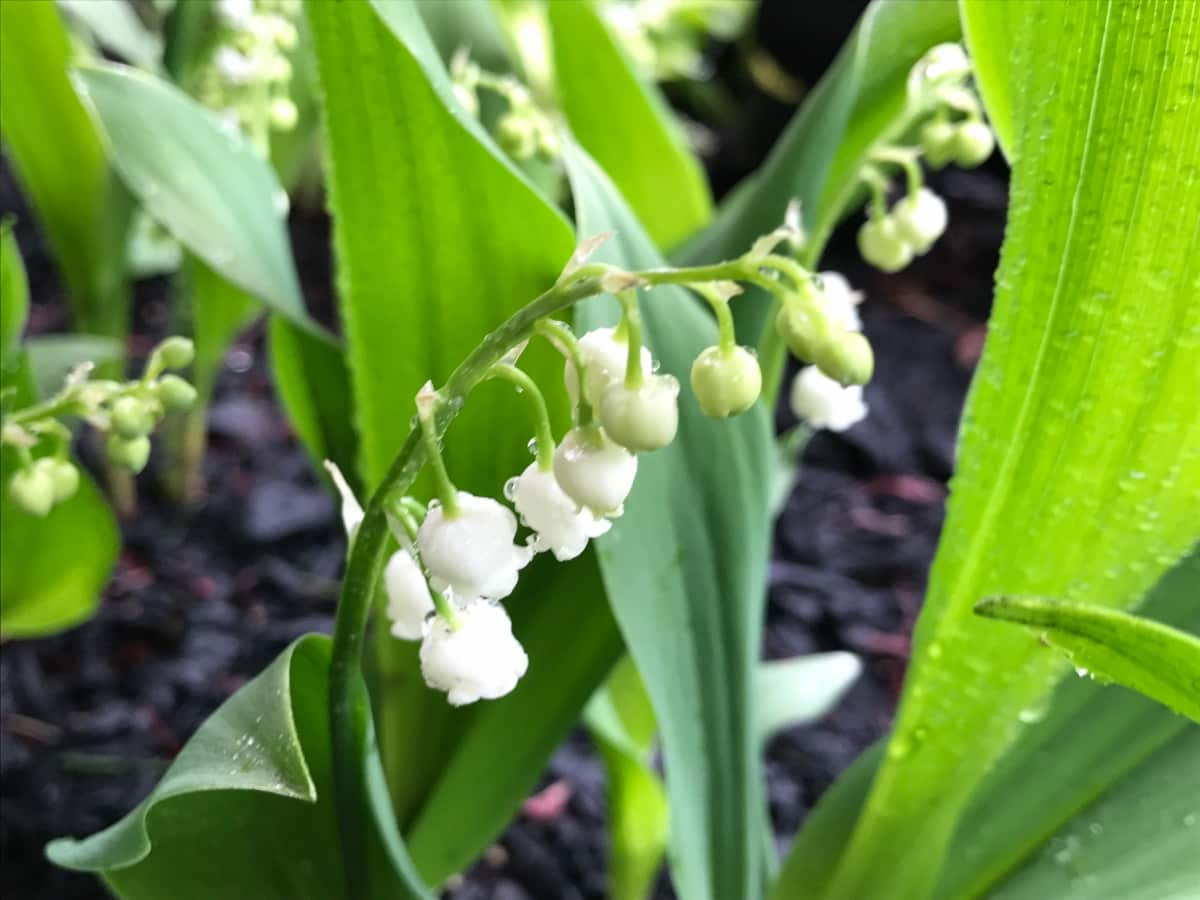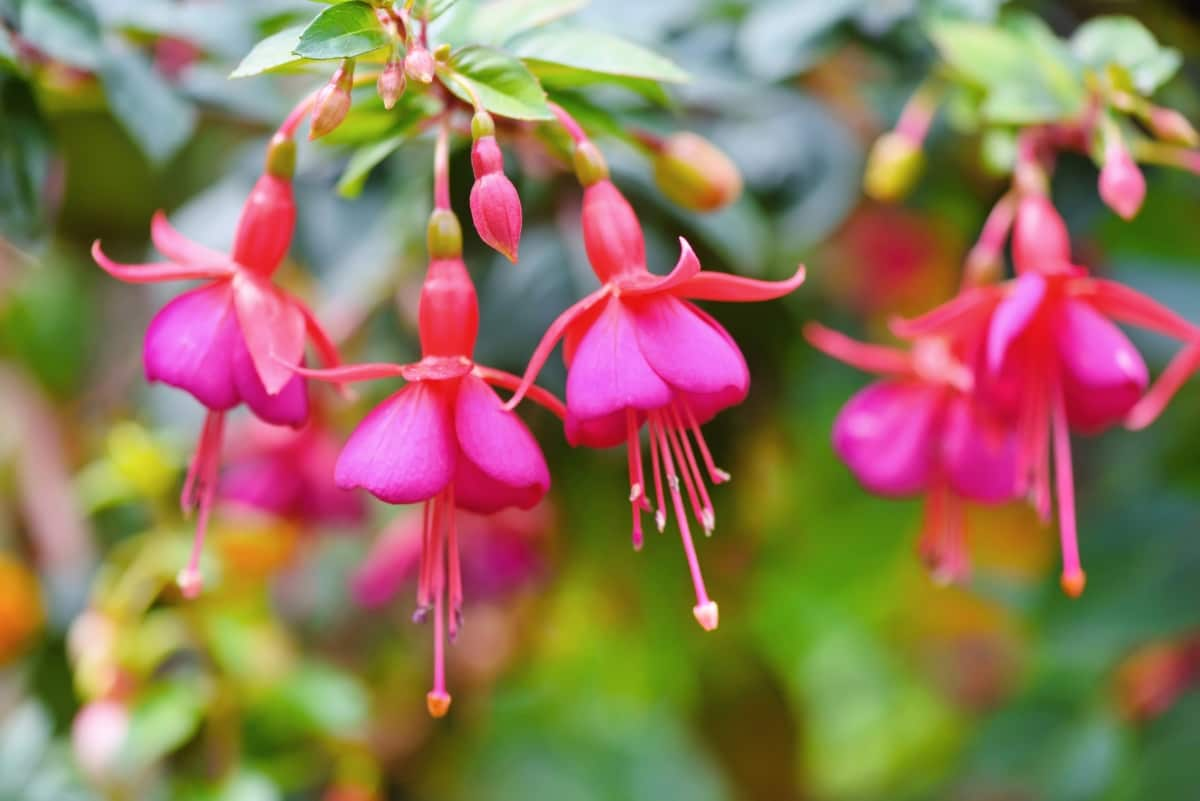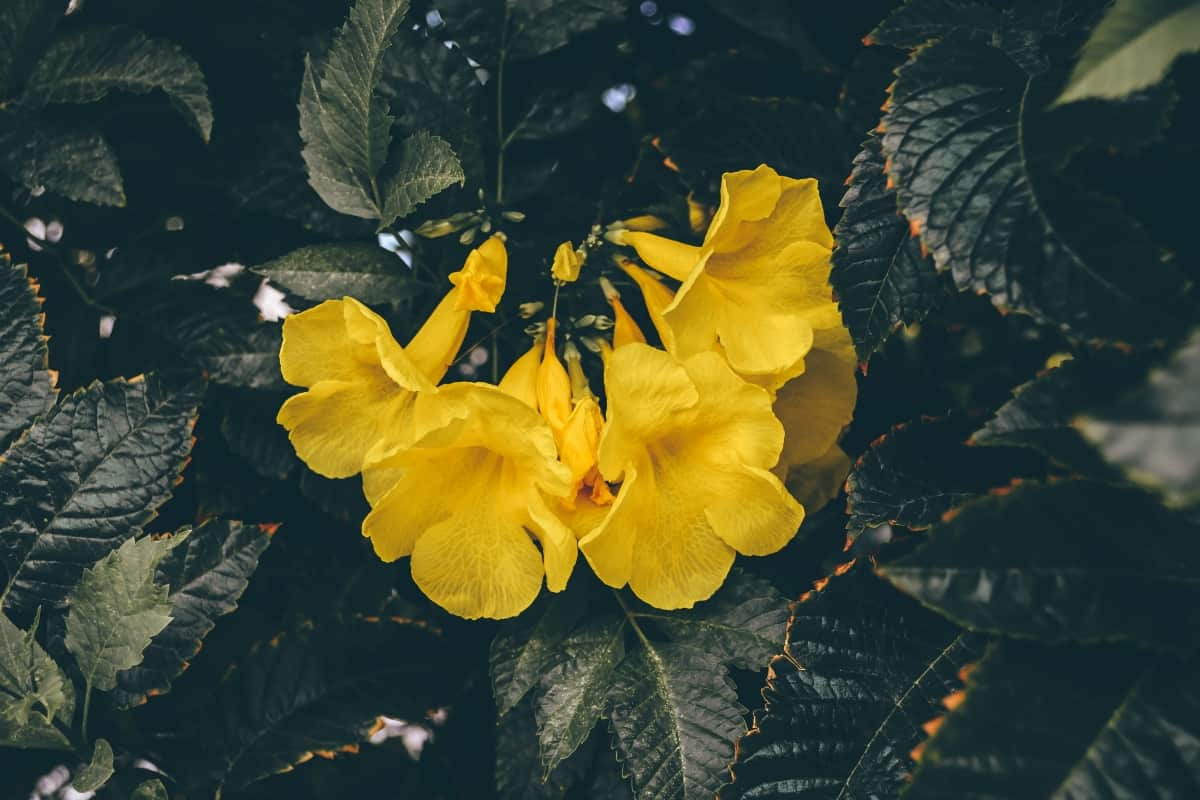Gardening enthusiasts often wonder, “Which flower is bell-shaped?” when they stumble upon distinctive blooms. The captivating allure of bell-shaped flowers on a stalk is hard to ignore, gently swaying with the faintest breeze. Among the various entrancing blossoms, the mysterious white bell-shaped flower’s name holds a special place for many. Whereas the vivid and bold yellow bell-shaped flower’s name brings a burst of sunshine to any garden. This bell-shaped flower list is a curated collection of ten exemplary species, each with unique charm, ready to elevate any garden setting.
10 Best Bell-Shaped Flowers
Lily of the Valley (Convallaria Majalis)
The Lily of the Valley is celebrated for its dainty, small white flowers that radiate a profound, mesmerizing scent, particularly during the spring. Its blossoms, each precisely shaped like a tiny bell, are arranged symmetrically on a slender stalk, creating a visual treat for the eyes. Besides its beauty, this flower has found its place in religious paintings as a symbol of humility and often represents the revival of joy. An added advantage is its ability to spread quickly, making it an ideal ground cover in shade-dominated areas.

Bluebell (Hyacinthoides Non-Scripta)
Native primarily to the UK, the Bluebell is a sign of spring’s return, with its vibrant blue-violet petals adorning woodlands. Its arching stems are covered with these mesmerizing bell-shaped flowers, forming a spectacular bluish carpet over the forest floor. However, while its beauty is undeniable, caution is advised as every part of the Bluebell plant, when ingested, is toxic.
Hanging Lobelia (Lobelia Erinus)
A spectacular sight in full bloom, the Hanging Lobelia showcases a cascade of brilliant blue flowers reminiscent of a blue waterfall. Its trailing growth pattern makes it ideal for hanging baskets and container gardening. Apart from enhancing gardens with its vivid color, it plays host to hummingbirds and butterflies, further adding to its appeal.
Fuchsia (Fuchsia spp.)
Characterized by its unique pendulous flowers, the Fuchsia stands out with its combination of pink, purple, and white hues. These elegantly dangling blossoms make the plant a focal point, whether in gardens or as potted specimens. Although they bloom profusely, Fuchsias prefer cool climates and benefit from protection against the intense midday sun.
In case you missed it: How to Enhance Flowering Organically and Stop Flower Drops

Campanula (Campanula spp.)
Campanula, commonly known as Bellflower, offers a delightful range in size and color, but all variants exhibit the hallmark bell shape. Often adorned in shades of blue, purple, or white, Campanula can rejuvenate borders, enhance rock gardens, or serve as a robust ground cover. Their adaptability to full sun and partial shade and minimal care requirements make them a cherished choice among gardeners.
Columbine (Aquilegia spp.)
The Columbine, a masterpiece of nature’s creation, is an emblem of intricate beauty and wild charm. With a unique array of spurred petals and gently nodding heads, these flowers present an exquisite spectacle, whether standing alone or amidst a lush garden ensemble.
Spanning a color palette from deep purples and blues to vibrant yellows and reds, the Columbine introduces wildflower-esque magic to any garden. Beyond their visual allure, these perennial bloomers serve a functional role, acting as hummingbird magnets with their late spring to early summer blossoms, infusing gardens with both beauty and life.
Trumpet Vine (Campsis Radicans)
The Trumpet Vine is a testament to the splendors of vivid and bold nature. Displaying large, trumpet-shaped flowers that seem to trumpet their beauty, this vine transforms landscapes with its shades of bright orange and red. As a robust climber, it’s known for its capability to rapidly envelop trellises and walls, converting them into living canvases of floral art.
In case you missed it: Michigan Perennial Flowers: Low-Maintenance, Long-Blooming, Drought and Shade-Tolerant

But the Trumpet Vine’s allure isn’t limited to human spectators. Its tubular flowers, brimming with nectar, are a favorite among hummingbirds, ensuring that gardens graced by this plant are always buzzing with activity during the warm summer months.
Harebell (Campanula Rotundifolia)
Often reminiscent of the Scottish highlands due to its comparison to the “bluebell of Scotland,” the Harebell is an epitome of grace and delicacy. Adorning slender stems, its gentle blue flowers sway with a balletic charm, captivating the eyes of onlookers. Its preference for drier soils makes it a unique contender in bell-shaped flowers, with rocky terrains and open meadows becoming its favored stage. Despite its ethereal appearance, the Harebell is resilient, showcasing its beauty consistently in well-drained soils bathed in ample sunlight.
Heath Bellflower (Wahlenbergia)
With a brilliance that can light up any garden, the Heath Bellflower stands out with its profusion of either blue or white blossoms. Whether adding depth to borders or being an integral part of mixed perennial beds, this flower promises to elevate the garden ambiance, especially during the vibrant summer months. But beyond its aesthetics, the Heath Bellflower appeals to practical gardeners. Its minimal maintenance requirements and love for well-drained soils make it an attractive addition, promising visual delight, and easy care.
In case you missed it: Best Flowers to Plant in Georgia: Native, Low-Maintenance, and Deer-Resistant

Himalayan Blue Poppy (Meconopsis Betonicifolia)
A jewel of the Himalayan ranges, the Himalayan Blue Poppy is nothing short of mesmerizing. Its bell-shaped blue petals radiate a celestial beauty, often leaving spectators in awe. Distinct from traditional poppies, this variant introduces an unparalleled charm to gardens, especially those in cooler climates. Although its cultivation can pose challenges, every effort invested is rewarded manifold by its unparalleled visual appeal. A slice of the heavens touches a garden graced by the Himalayan Blue Poppy.
Conclusion
Bell-shaped flowers hold a unique and captivating position. Their graceful structures, whether swaying on slender stalks or cascading from hanging baskets, are a testament to the diverse beauty of the botanical world. Each species, from the fragrant Lily of the Valley to the mesmerizing Himalayan Blue Poppy, narrates its own story, blending seamlessly into the chorus of the garden. These flowers, in their varied hues and forms, are not just visual treats but also serve as hubs of activity, attracting a myriad of wildlife like hummingbirds and butterflies.
As gardeners, when we introduce these bell-shaped wonders into our spaces, we’re enriching the aesthetic appeal and contributing to a vibrant ecosystem. In essence, bell-shaped flowers are more than just plants; they’re symbols of harmony, beauty, and the intricate interconnectedness of life. So, as you tread on your gardening journey, let these blossoms be your muse, guiding you toward creating spaces that resonate with charm, vitality, and a touch of nature’s magic.
- Feed Your Flock for Less: Top 10 Tips to Save on Chicken Feed
- Ultimate Guide to Ossabaw Island Hog: Breeding, Raising, Diet, and Care
- Hatching Answers: The Top 10 Reasons Your Chickens Aren’t Laying Eggs
- Eggs and Economics: Breaking Down the Cost of Raising Backyard Chickens
- Defend Your Greens: Proven Methods to Keep Iguanas Out of Your Garden
- Ultimate Guide to Cinnamon Queen Chicken: A Comprehensive Guide for Beginners
- Ultimate Guide to California Tan Chicken: Breeding, Raising, Diet, Egg-Production and Care
- Ultimate Guide to Marsh Daisy Chicken: Breeding, Raising, Diet, and Care
- 10 Types of Chicken Farming Businesses You Can Start for Profits